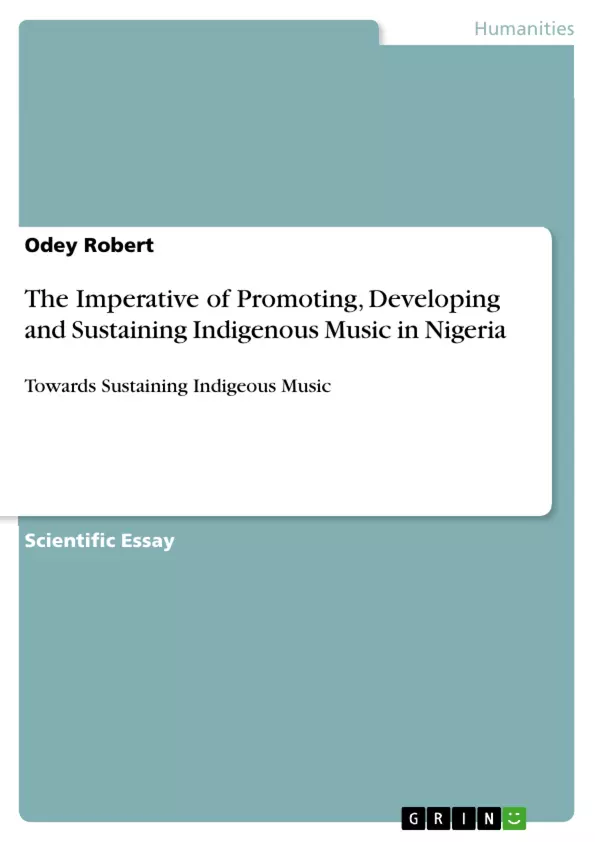Until very recently, Nigerian indigenous music was silenced by its Western counterpart, following westernisation, globalisation and attrition. Music is cultural. And all Nigerian cultures have their respective music. Despite the recent promotion, development and sustenance bids of several artists, scholars and concerned authorities, the teeming Nigerian masses are yet to be roused towards and properly educated, sensitised and re-oriented on and towards indigenous music. It is against the above backdrop that this study has emerged to call for a change in these regards. The paper maintains that it is imperative to properly, constantly and adequately promote, develop and sustain our indigenous music so as to project our indigenous music, create a place for it in the globalised Western hostile village, and allow for culture continuity and national development. Music unites people(s) and allows for the showcasing of cultural identity, ethos and aesthetics. Therefore, to duly tap from the potentials/prospects of indigenous music, it is imperative to incessantly promote, develop and sustain indigenous music in Nigeria and beyond. This study is anchored on music and indigenous wholistic theories that are most suitable for it, following its nature and pursuit. It relied on both primary and secondary sources of data collection. Oral interview, participant and non-participant observation, and induction formed the oral sources, while textual library materials like journals, textbooks, etc. formed the written, secondary, sources. The qualitative approach and the descriptive methods were employed.
Keywords: Imperative, Indigenous music, Developing, Promoting, Sustaining
Inhaltsverzeichnis (Table of Contents)
- Introduction
- Conceptualising Music
- Perspectives on Nigerian Indigenous Music
- Traditional Musical Instruments
- Theoretical Framework
- Indigenous Music Imperialism
- Recommendation
- References
Zielsetzung und Themenschwerpunkte (Objectives and Key Themes)
This study aims to highlight the importance of promoting, developing and sustaining indigenous music in Nigeria. It argues that indigenous music plays a vital role in cultural identity, transmission, and national development, and that it deserves greater recognition and support.
- The erosion of indigenous culture in Nigeria, particularly in music
- The importance of indigenous music in expressing cultural identity and values
- The role of indigenous music in socialisation, communication, and national transformation
- The impact of Westernisation and globalisation on indigenous music
- The need for government and other stakeholders to support the promotion and development of indigenous music
Zusammenfassung der Kapitel (Chapter Summaries)
The introduction highlights the decline of indigenous music in Nigeria due to Westernisation and globalisation, arguing that it is imperative to revive and sustain it. The chapter on conceptualising music discusses the definition and significance of indigenous music, emphasizing its role in expressing cultural identity and transmitting heritage. The chapter on perspectives on Nigerian indigenous music explores the diverse range of musical traditions and their socio-cultural functions, including religious rituals, recreation, and social organisation. The chapter on traditional musical instruments delves into the various instruments used in Nigerian indigenous music and their cultural significance. The study concludes with a call for the promotion and preservation of indigenous music to ensure its continued existence and impact on Nigerian society.
Schlüsselwörter (Keywords)
The main keywords and focus topics of this study include indigenous music, cultural identity, national development, Westernisation, globalisation, promotion, development, and sustenance. The study explores the significance of indigenous music in preserving cultural heritage and fostering national unity.
- Quote paper
- Odey Robert (Author), 2017, The Imperative of Promoting, Developing and Sustaining Indigenous Music in Nigeria, Munich, GRIN Verlag, https://www.grin.com/document/354538



